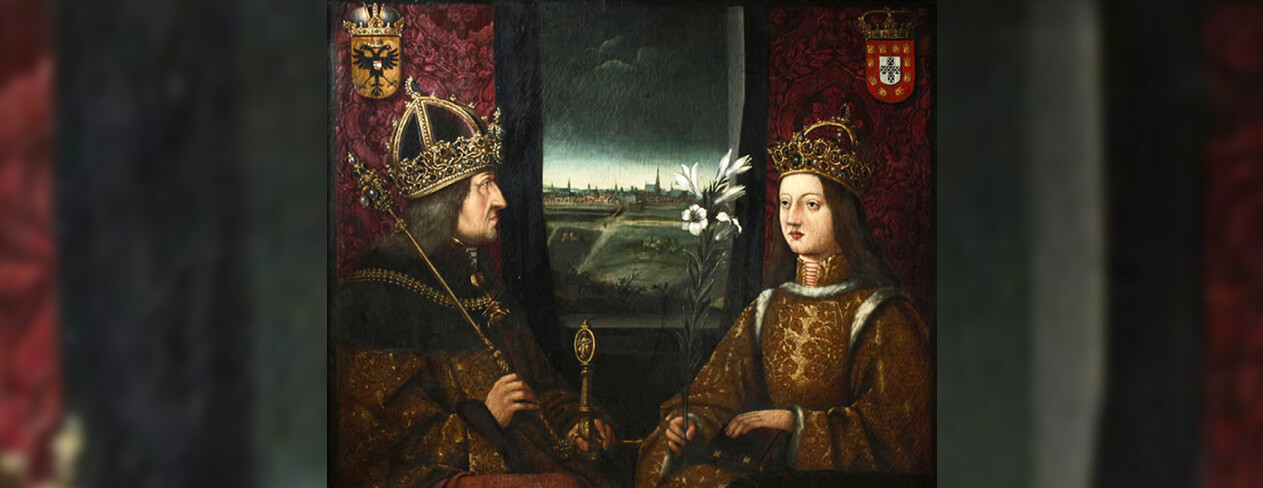
Emperor Frederick III and Eleanor of Portugal married on 16 March 1452. This was one of the most baffling unions among the Habsburgs.
Frederick’s attitude towards women was extremely reserved, to put it mildly, and he avoided committing himself until the age of 37. His choice of Eleanor, 20 years his junior, as his bride was largely motivated by financial reasons, given her abundant dowry. In the 15th century, Portugal was one of the richest countries in Europe due to its lucrative sugar trade from the Atlantic islands, while Frederick, on the other hand, was perpetually in financial straits. That said, Eleanor’s motives were hardly more subtle. A French marriage had also been considered for her, but she preferred the title of empress over that of a ‘simple’ queen.
They married just a few days after their first meeting in Siena, Italy. It took a month to consummate the marriage and even longer before they were able to communicate without a translator.
The couple’s residence in the grim, dark castle of Wiener Neustadt was incomparable to the wealth and cultural sophistication of Portugal. For Eleanor, who was accustomed to splendour, comfort, and the artistic vibrancy of the Renaissance, everyday life in Austria felt poor, cold, and monotonous. She was lonely and homesick, growing increasingly bitter. Her Mediterranean temperament sometimes clashed with Frederick’s stoic, phlegmatic indifference. Paradoxically, they were too different in personality to have serious quarrels.
Even more paradoxically, their union could still be called another ‘wedding of the century,’ as it initiated the (almost) uninterrupted Habsburg rule on the imperial throne for nearly the next 450 years.
Access to the Metatext via placing an order for an augmented product. See Terms of Use